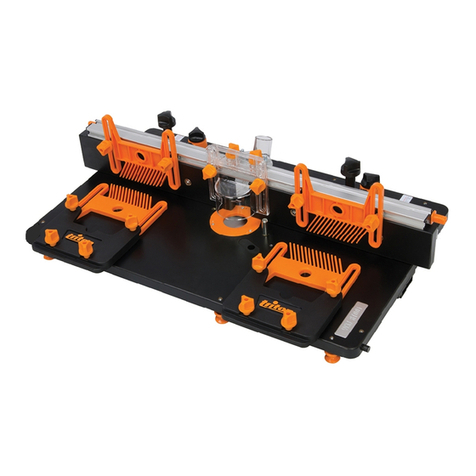
Concentric thermostatic mixer valve
3
Replacement parts can be ordered from Triton Customer
Service. See ‘spare parts’ for details and part numbers.
PLUMBING REQUIREMENTS
DO NOT use jointing compounds on any pipe
fittings for the installation,
DO NOT solder fittings near the mixer unit
as heat can transfer along the pipework and
damage the mixer valve.
IMPORTANT:
• The layout and sizing of pipework MUST
be such that nominally equal inlet supply
pressures are achieved and the effects of
other draw-offs are minimised.
• The pipe-work should be installed such
that other taps and appliances being
operated elsewhere on the premises do not
significantly affect the flow
• When connecting pipe-work avoid using
tight 90° elbows; swept or formed bends will
give the best performance.
• The hot water pipe entry must be made to
the left-hand side inlet, marked HOT, ‘H’ or
with a red/orange label.
• Suitable isolating valves (complying with
Water Regulations and Bylaws) must be fitted
on the hot and cold water supplies to the
shower as an independent means of isolating
the water supplies should maintenance or
servicing be necessary.
• It is preferable to flush the pipe-work to clear
the system of debris and check for leaks
before connecting to the mixer.
• The mixer inlets contain removable filters
that may become blocked if debris is not
flushed through before fitting.
(Commercial applications)
• Triton recommends for all commercial
applications that, easily accessible, in-line
filters are used to aid maintenance.
Hard water areas
a. If it is intended to operate the shower
in areas of hard water (above 200-ppm
temporary hardness), a scale inhibitor may
have to be fitted. For advice on the Triton
scale inhibitor, please contact Customer
Service.
b. For best performance the showerhead MUST be
regularly cleaned to remove scale and debris.
WATER SYSTEM REQUIREMENTS
This mixer shower is suitable for: -
• Gravity water systems
• Pumped gravity systems.
• Fully modulating type combination boilers
• Multi-point hot water heaters.
• Thermal storage,
• Unvented systems
When installing this mixer with a Combination or
multi-point boiler, it may be necessary to install
flow regulation.
Check that the appliance is capable of delivering
hot water at a minimum switch-on flow rate
of 3 litres per minute. At flow rates between 3
and 8 litres per minute, the appliance must be
capable of raising the water temperature to 52°C
(minimum).
Water temperature at the inlet of the mixer valve
must remain relatively constant when flow rate
adjustments are made (refer to the appliance-
operating manual to confirm compatibility with
this mixer shower).
Where thermal store systems and instantaneous
gas water heaters are used, if excessive draw-
off take place the appliance may not be able to
maintain an adequate output temperature. This
could result in the shower temperature becoming
noticeably cooler.
Flow regulators can be fitted with high-pressure
water systems to reduce flow rate and assist
economy.
The hot supply temperature MUST remain a
minimum of 10°C hotter than the required blend
temperature for optimum performance.





























